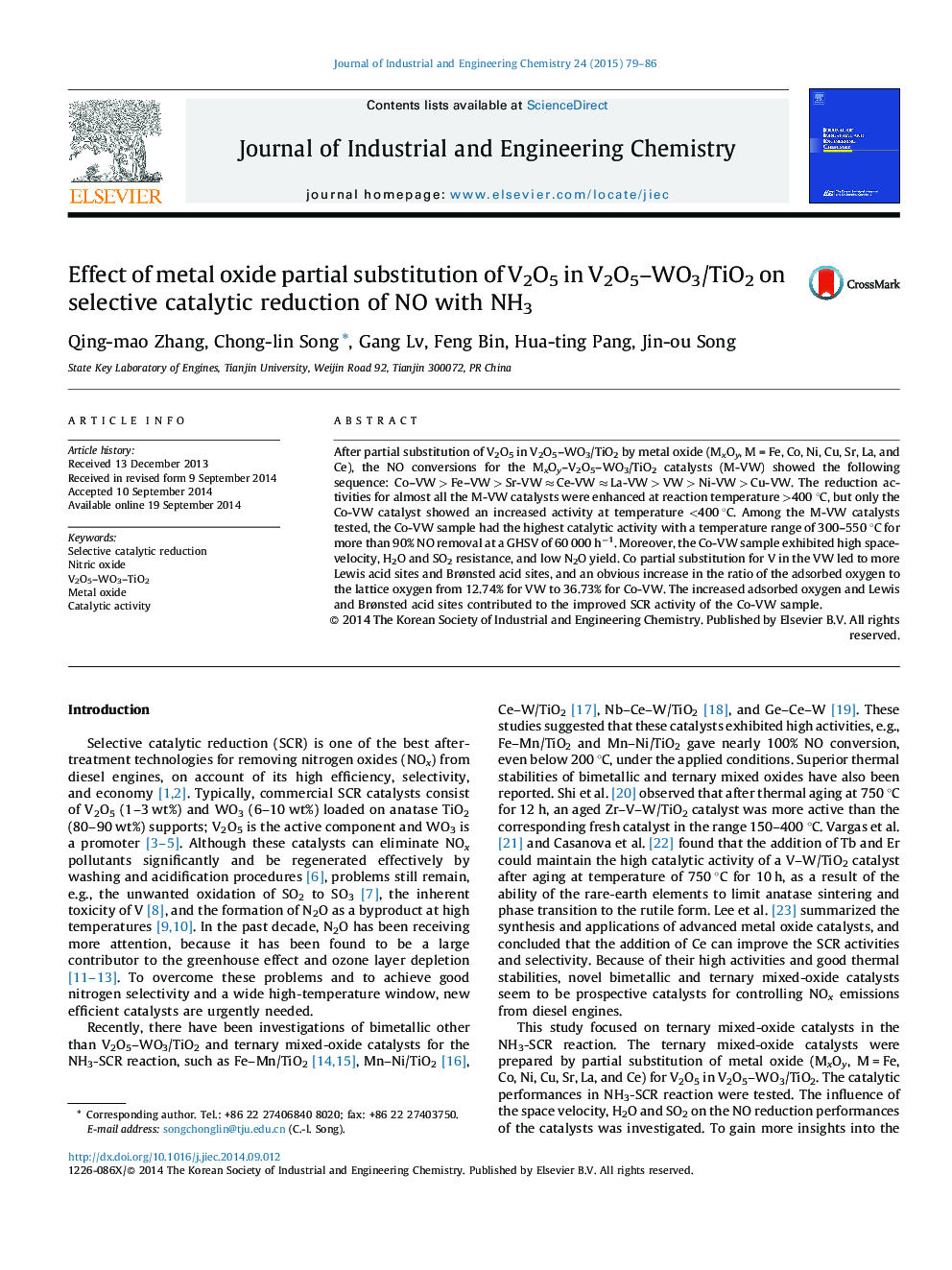| Article ID | Journal | Published Year | Pages | File Type |
|---|---|---|---|---|
| 227218 | Journal of Industrial and Engineering Chemistry | 2015 | 8 Pages |
After partial substitution of V2O5 in V2O5–WO3/TiO2 by metal oxide (MxOy, M = Fe, Co, Ni, Cu, Sr, La, and Ce), the NO conversions for the MxOy–V2O5–WO3/TiO2 catalysts (M-VW) showed the following sequence: Co–VW > Fe–VW > Sr-VW ≈ Ce-VW ≈ La-VW > VW > Ni-VW > Cu-VW. The reduction activities for almost all the M-VW catalysts were enhanced at reaction temperature >400 °C, but only the Co-VW catalyst showed an increased activity at temperature <400 °C. Among the M-VW catalysts tested, the Co-VW sample had the highest catalytic activity with a temperature range of 300–550 °C for more than 90% NO removal at a GHSV of 60 000 h−1. Moreover, the Co-VW sample exhibited high space-velocity, H2O and SO2 resistance, and low N2O yield. Co partial substitution for V in the VW led to more Lewis acid sites and Brønsted acid sites, and an obvious increase in the ratio of the adsorbed oxygen to the lattice oxygen from 12.74% for VW to 36.73% for Co-VW. The increased adsorbed oxygen and Lewis and Brønsted acid sites contributed to the improved SCR activity of the Co-VW sample.
